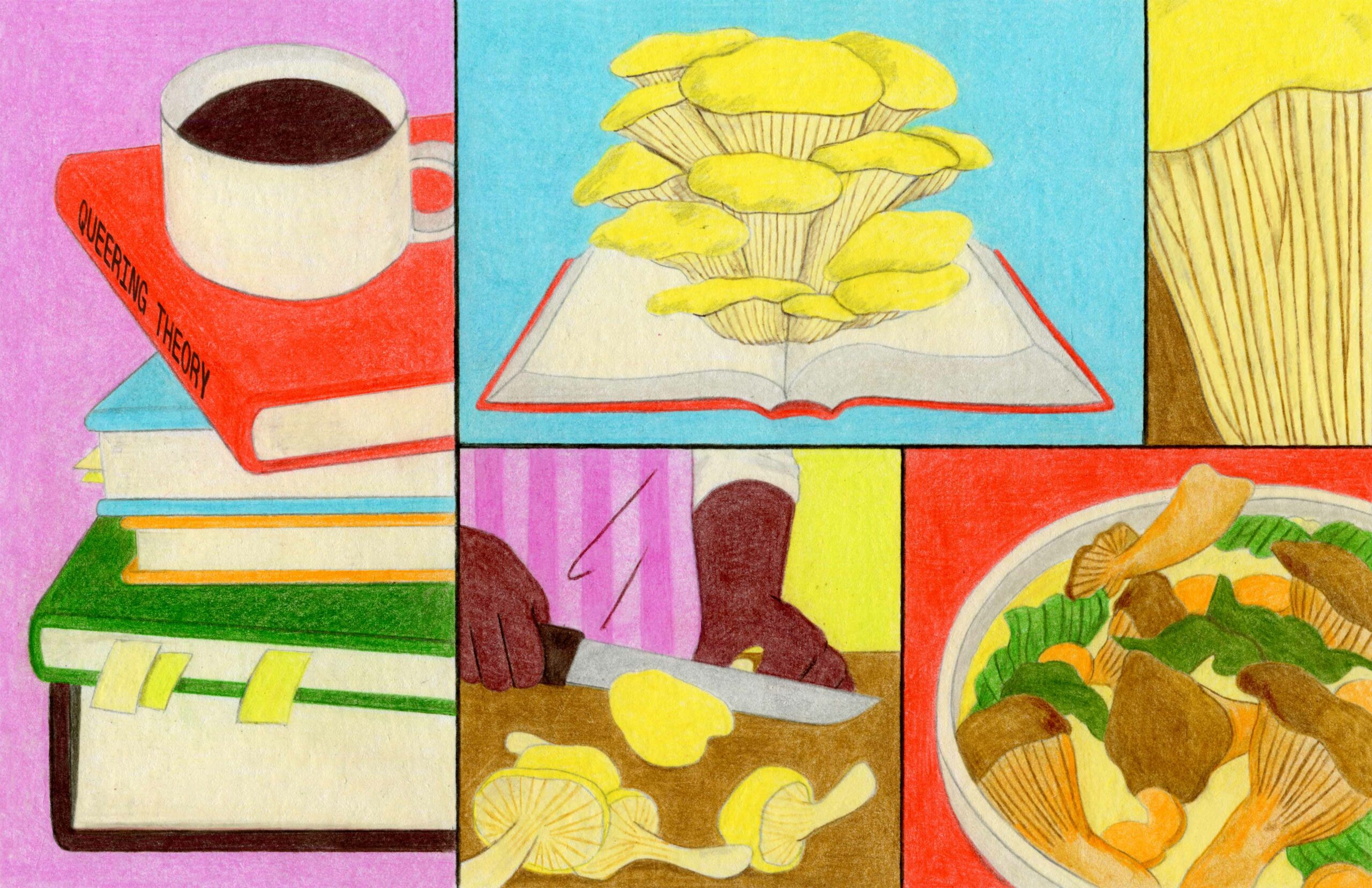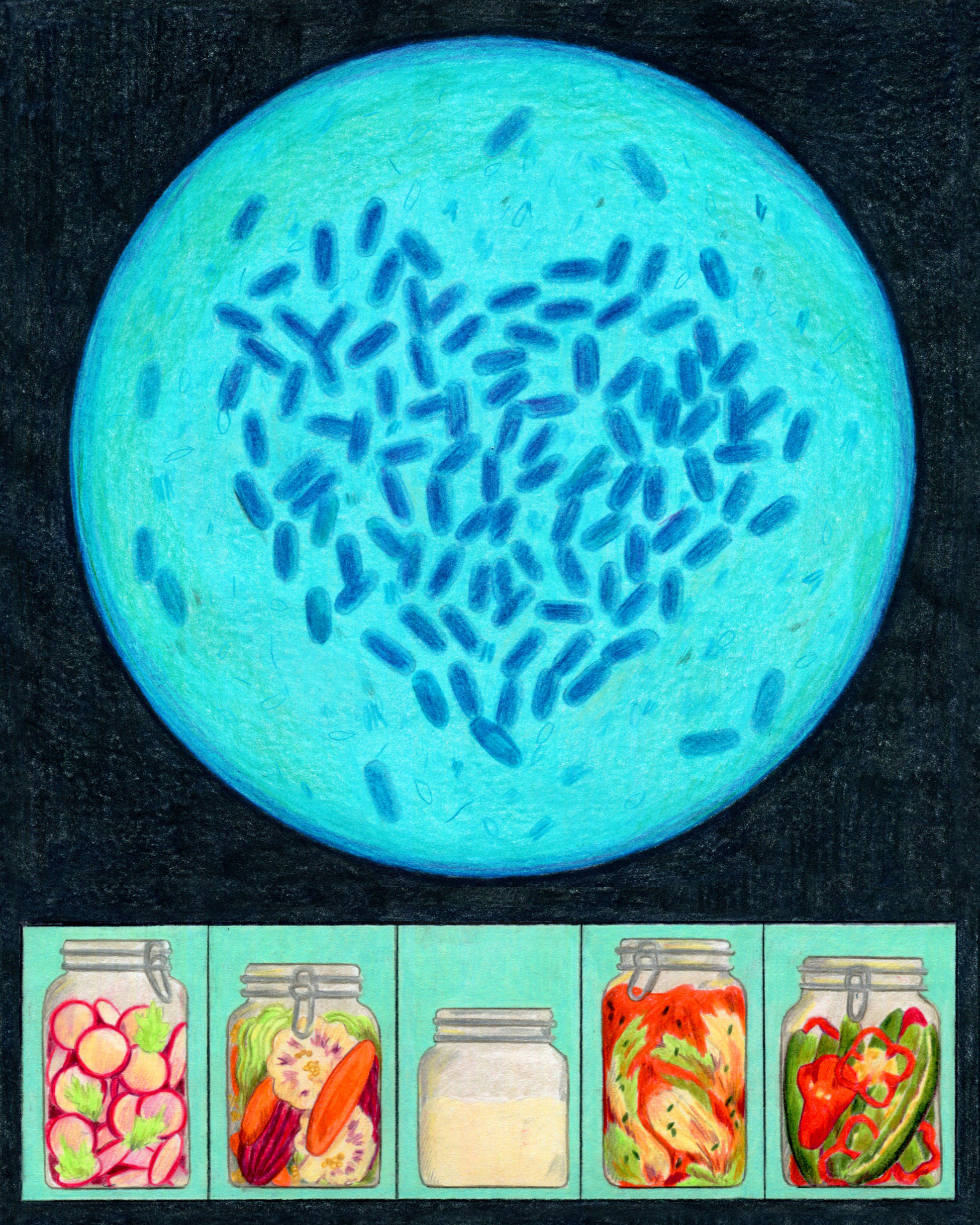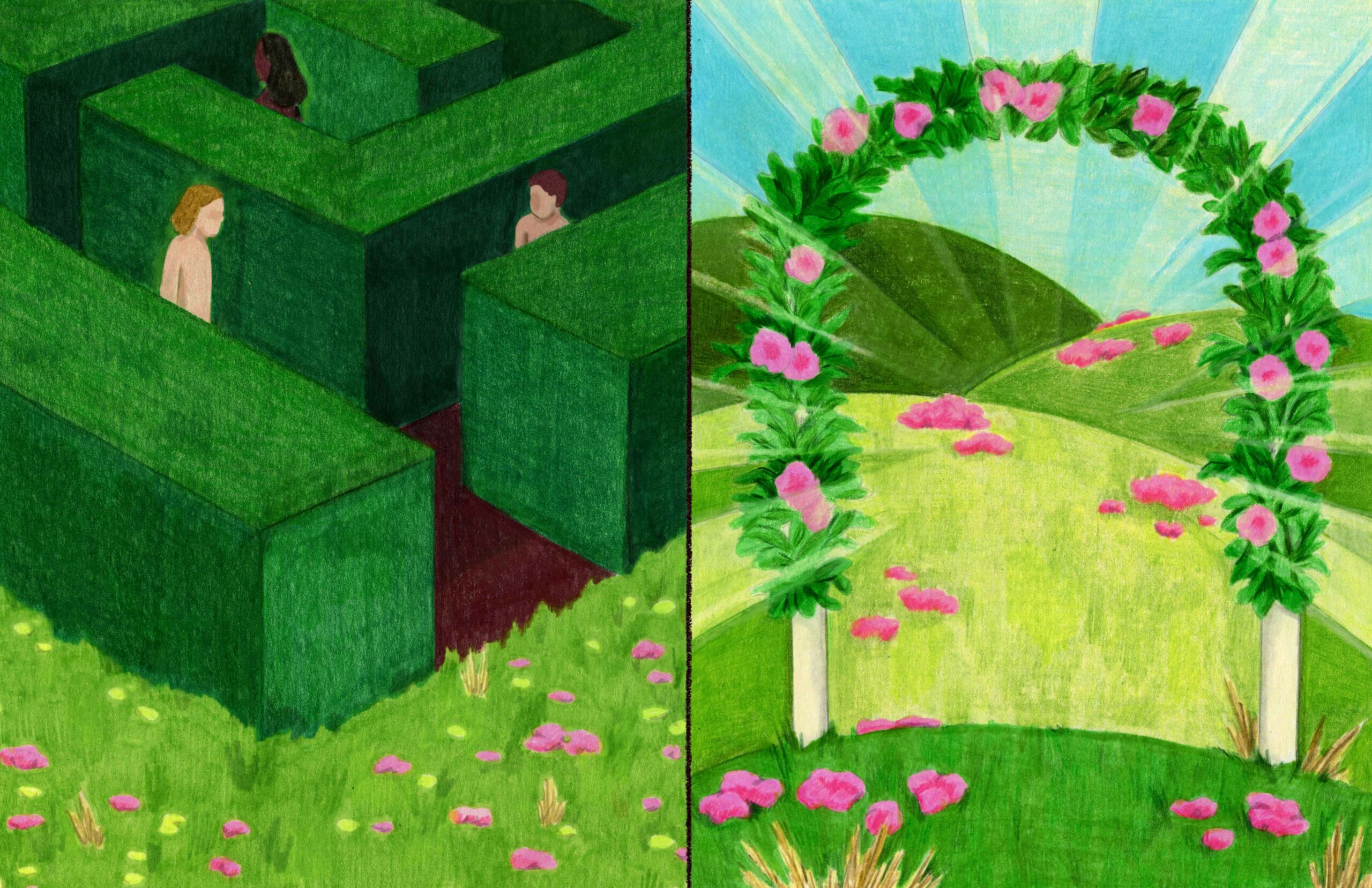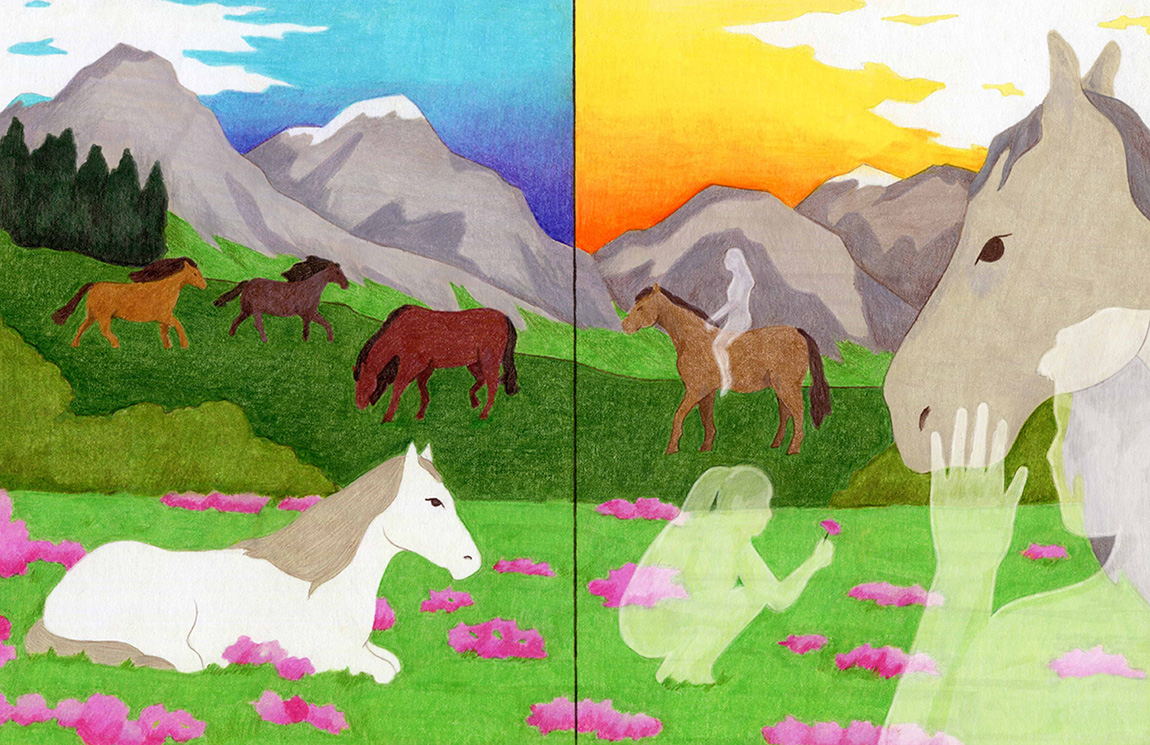Queering Theory untangles critical theory through the multifarious lens of queer theory, food, and ecology.
Queer theory has moulded and marked me. It has skewed my narratives and shaped my ideas. From my thinking, to my identity; I’ve found it invaluable in navigating this chaotic world. Wherever it’s applied, queer theory subverts the norm, offering novel ways to see. It is inherently unusual and integrally non-normative, challenging everything. At its intersection with environmental thinking, it becomes ‘queer ecology,’ challenging our assumptions about nature, and reimagining scientific perspectives.
The premise of queer theory is decidedly straightforward: flip the norm. Yet as I studied it in my higher education, it took a long time for its’ simple truth to come out. When it finally opened up, a full fantasticness of queer theory flew forth, yet deciphering how to draw it out had cost me dearly, both fiscally and physically. Once initiated, I soon realised that there are as many wonderful possibilities in queer theory as there are queer identities: it can be applied anywhere; affects anything! I now find it an essential resource in not only my work, but also in my life at large, for why would anyone be normal when there are so many other ways to be?
So why is something so mind-bending also so inaccessible? This six-part series for MOLD seeks to unravel some of the complexities of critical theory, ‘queer’ queer theory, and identify more accessible ways to understand its teachings.
To better understand queer theory, it helps to know the term’s origin. ‘Queer’ first found use in the 16th century, meaning ‘strange,’ or ‘odd.’ Its contemporary context as a gender or sexual identity is the 20th-century homophilic appropriation of a 19th-century homophobic slur. I use it here to mean that which sits outside the ‘norm:’ those generally accepted notions by which society operates, i.e., heteronormativity.
Queer theory acceded queer studies, itself drawn from feminism and critical race theory (CRT). All are forms of ‘critical theory’—a branch of social philosophy—that questions, challenges, and analyses existing power structures. Critical theory now resides in the hallowed halls of academia to be studied and learned, but it’s genesis was in activism, and, ironically, inherently anti-establishment.
I thought queer was what I was; but once I cracked the code it became so much more how I thought.
In these hallowed halls, words are whispered in a different language, a sort-of anti-vernacular, thick with conjugations and laced with embellishments. This is academic prose, honed over centuries into a highly concise and efficient way to condense complex thinking. Concise it may be; accessible it is not. I’d trawl through its texts, snagging my thinking on the sharp semantic jargon which littered my literary path.
The problem with academic prose is that it’s written by, and for, the cognoscenti, gatekeeping the knowledge within. Before my MA, I thought queer was what I was; but once I cracked the code it became so much more how I thought. For those unable, or unwilling to undertake this educational rigmarole, the codified truths within remain out of reach, locked into a language of inaccessibility.
I’m not the first critic of academic prose. Philosopher Will Durant called it ‘academese,’ defining it by its opposition to ‘plain language.’1 Linguist Jacob L. Mey called it a ‘road-block’ to knowledge, “discriminat[ing] against Academe’s outsiders;” and Novelist George Orwell’s 1946 Politics and the English Language compared it with oppressive political ideology.2 When specialised, it borrows Durant’s suffix making ‘legalese,’ or ‘medicalese,’ and, though yet uncoined, the near similarity of ‘queerese’ to ‘queasy’ seems more than mere semantics.
- 1. Lockhart, Heather (2015). “Academia, Here I Come!” : Plain Language and Academese in the Postsecondary Academy (MA thesis). Montclair State University.
- 2. Mey, Jacob (1985). Whose Language?: A Study in Linguistic Pragmatics. John Benjamins Publishing. pp. 71–77.
Used amongst the highest echelons of education, academic prose has become associated with intellect. An inability to understand it thus demotes a person’s perceived intelligence, and therefore their abilities for, as the adage goes, knowledge equals power. Philosopher Michel Foucault dubbed this ‘power-knowledge;’ the cooption of knowledge to uphold power systems. Ironic, then, considering critical thinking’s radical anti-establishment beginnings.
Knowledge should never be a privilege, yet restricting access to it is nothing new. The oppressor who controls knowledge is well equipped to repress the less educated oppressed. Indeed, restricted literacy has a history of maintaining classist, sexist, and racist systems of power. Burying the critical thinking of feminism, CRT, queer theory, etc., in academic prose restricts its accessibility, controlling who it enlightens. It is no coincidence that those from whence these theories came—people who identify as female, people of colour, and queer folx—are prime candidates for political repression.
It can be argued that for these forms of radical thinking to gain access to the hallowed halls of the academe, they had to assimilate. Yet once assimilated, its radicalness is no more, for it is now normative within that system.
So then, let us ‘queer’ theory, for through its assimilation into the academe, it has lost its activism. It can be argued that entry into the academe required queerness to assimilate, yet in its assimilation it automatically loses its queerness, for it is, by definition, non-normativity! Thus, if academic prose is the medium to queer theory’s message, let us speak it in new tongues.
My titular question, What is Information?, helps us here. ‘Information,’ from the Latin informare, means ‘to shape, or give form;’ it quite literally informs us. The accumulation of information becomes knowledge, which in turn endows its holder with power. By disseminating this knowledge the power it upholds can be undermined; thus in ‘queering’; theory, we can better spread its thinking, and bring down those institutional walls.
In this, queer, the theory, separates from queer, the identity; for though the two are inherently intertwined, someone who doesn’t identify as queer can still think queer. Indeed, anyone with a non-normative thought can be theoretically ‘queer.’ This is where queer ecology comes out, as it affects not just sexual and identity nonconformists, but us all. Where queer theory is based on social difference; ecology is the study of the relationship between organisms, and their environmental surroundings. Thus, taking cues from queer theory’s activism; and ecology’s basis in relativity: queer ecology can help us question normative environmental thinking and challenge us to reexamine it, revealing alternative ways of perceiving it.
Normativity sees nature dualistically: as ‘natural or unnatural;’ ‘human or non-human.’ This dualism is dangerous for it demarcates a difference between human and non-human worlds, and ranks them both in order of naturalness; a binaried thinking which queer theorist Jonathan Dollimore calls “one of the most violent hierarchies.”3 Queer ecology rejects these binaries and hierarchies, suggesting instead that nature exists in a constant state.
- 3. Jonathan Dollimore, (1991) Sexual Dissidence, 109
Numerous critical theorists have defined queer ecology. In their 2010 essay Guest Column: Queer Ecology, philosopher Timothy Morton connects ecology to queer theory in that they both “[demand] intimacies with other beings.”4 Catriona Mortimer-Sandilands and Bruce Erickson introduce their Queer Ecologies (2010) by suggesting queer ecology “probe[s] the intersections of sex and nature.”5 In her Strange Natures (2013), professor Nicole Seymour suggests queer ecology can ‘imagine’ things not yet in existence. Morton, again, suggests that non-definitive language facilitates a less binaries ecological approach in their And You May Find Yourself Living in an Age of Mass Extinction (2021 [2016]). Queer ecology’s critical thinking also links to other theories. Designer Justin C. Wong proposes ‘abjection’—extreme disgust—“trembles our epistemologies.”6 Through the emotion of disgust, our knowledge systems can be undermined, opening us to new thinking.
- 4. Timothy Morton (2010), Guest Column: Queer Ecology 273
- 5. Sandilands et al (2010), Queer Ecologies, 5
- 6. Jason C Wong (2023), Eating the Abject: Troubling Purity Narratives in Food for The Gramounce
These thinkers each suggest unique interpretations of queer ecology, indicating the field’s infinitely multifarious nature. Building off the back of these, I intend to use this space to make my own, for though I am no ecologist, or fluent in queer theory, my experience of queer ecology has nonetheless changed my outlook. Peeking through the academe’s keyholes, and peering behind its closed doors, I have developed my own unique understanding of critical theory and queer ecology. As I present these ideas, I endeavour to make them more digestible by explaining them through my specialism: food. A most communicable medium, food is at once relatable and indefinitely complex, and can contain worlds of information. We will metabolise, together, in the hopes that these offerings can provide everyone a seat at the table. So, together, let’s ‘queer’ theory.




